Probiotics. They come in pills right? Or yoghurt? True, but traditionally people got their daily dose of probiotics from a variety of lacto fermented foods. Lacto fermentation is a method of preserving food in the absence of refrigeration, and is used widely throughout the world. Think sauerkraut or sourdough.
This week we had two days considering a variety of lacto fermented foods, and we haven’t even begun to scratch the surface. Cultured cream, water kefir, fermented orange juice, sauerkraut, gingered carrots and lacto fermented tomato sauce were just a few of the items made. Then came a brief lesson on feeding and maintaining a sourdough starter. We ground our own flour to make bread, also using the flour to make soaked pancakes. The pancakes, which were soaked overnight and cooked the next morning, were divine served with the cultured cream. Most of us went home with some sort of starter and are now culturing various products in our kitchen. At last count I had five separate cultures on my kitchen bench and am trying to grow a sixth.
We took a short break from ferments and were treated to a fantastic demonstration of the Thermomix by one of our classmates Gina. I have been to a few Thermomix demonstrations and Gina is hands down the best consultant I have met. If you are in the market for a machine let me know, I’ll put you in touch with her.
Wednesday was all about sea vegetables. Seaweed in common parlance. Until now, my experience with sea vegetables has been limited to the nori wrapped around sushi. Apparently this is not the extent of the family. We made arame caviar, arame tapenade and wakame gomasio, which is a condiment of sesame seeds, powdered wakame and salt. Yum. One intrepid group also made (inadvertently) candied arame. Candied arame is awesome. We were fighting each other for the last pieces. There was also lots of sushi for lunch. Sushi is surprisingly easy to make, and will be appearing a lot more frequently at our house.
The rest of the week was devoted to legumes. Beans. I know what you are thinking, but prepared properly beans do not have to have socially embarrassing consequences. The trick is to soak them overnight in lots of water, then cook them thoroughly. Beans contain long chain sugars called oligosaccharides, which are difficult to digest (and to pronounce) and cause gas build up in your digestive system. If they are soaked long enough, the oligosaccharides leach out and don’t have the same ramifications. Always discard your soaking water. Never cook your beans in it. The way to tell if your bean is cooked is to smoosh it on your bench top. Any crunchy bits means that your beans are not ready. Great fun was had testing this theory out, if the bench smeared with beans was anything to go by.
Beans are extremely versatile, as we demonstrated by making a variety of dips, salads, burgers and stews. The stand out dish, however, was the home made baked beans with smoked bacon bones. Although the corn tortillas and pupusas came a very close second. A home made corn tortilla is beyond easy, and a thousand times better than one enclosed in plastic from a supermarket. A pupusa is essentially a stuffed tortilla which, served with zesty salsa and cultured cream, is heaven.
I’ve come away from this week with a few quick lunch dishes up my sleeve, and an incredible desire to lacto ferment everything in sight. I might have to convince Mr Grumpy to install more shelves.


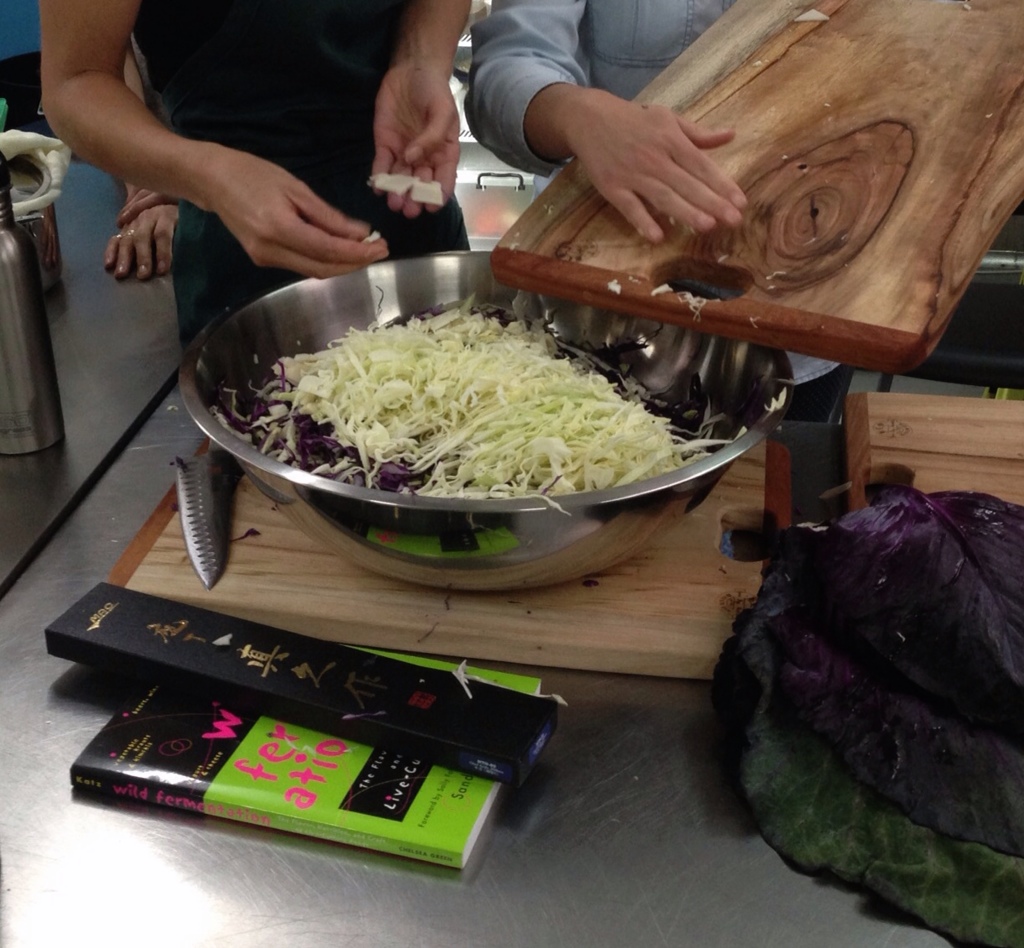
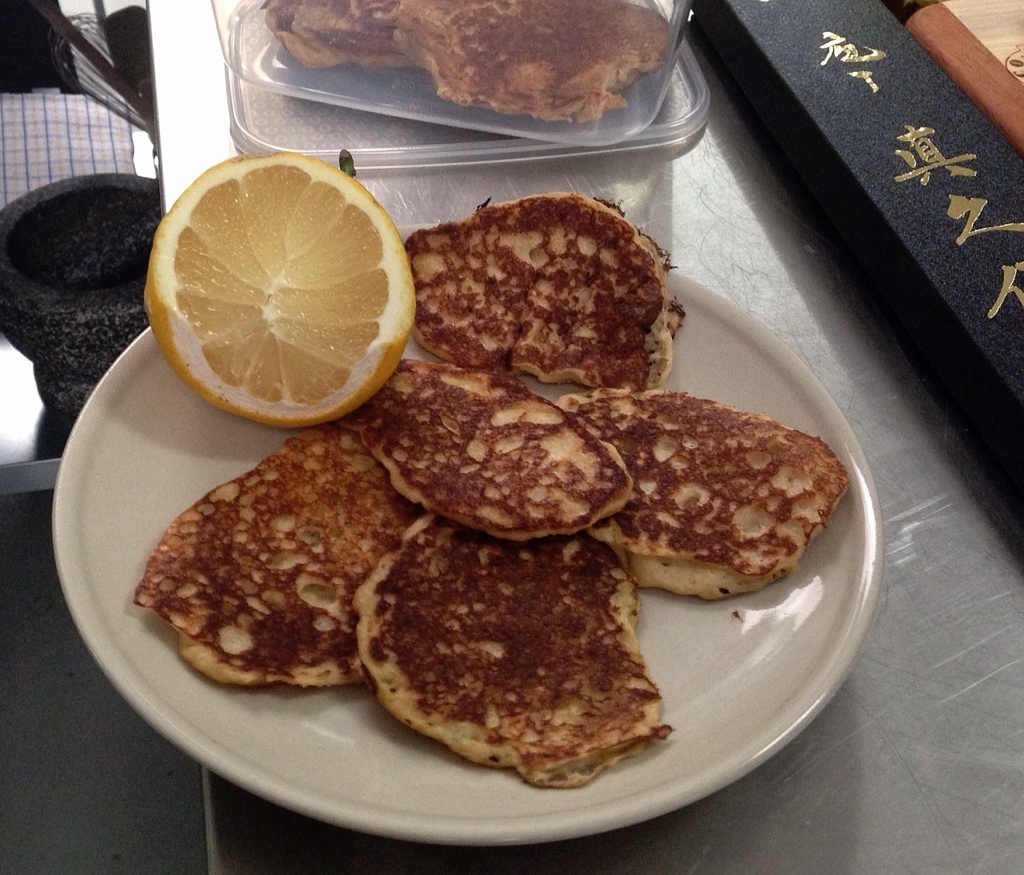
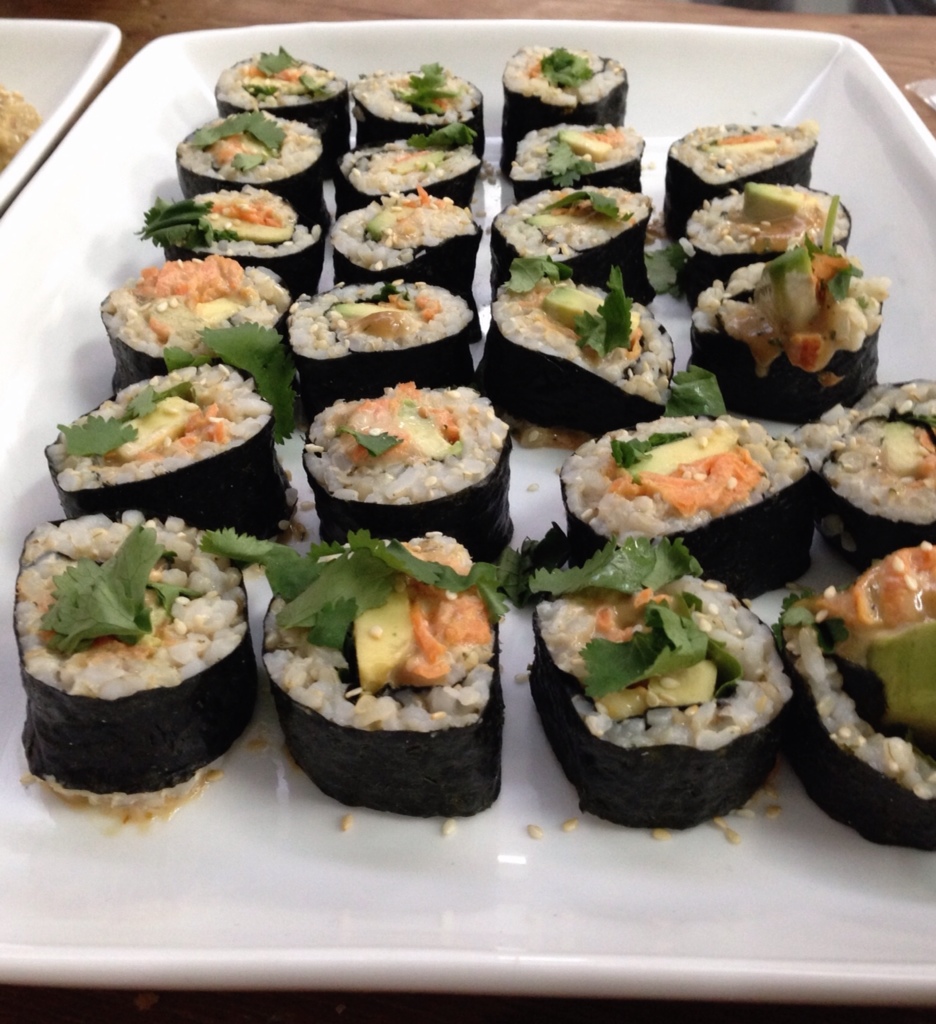
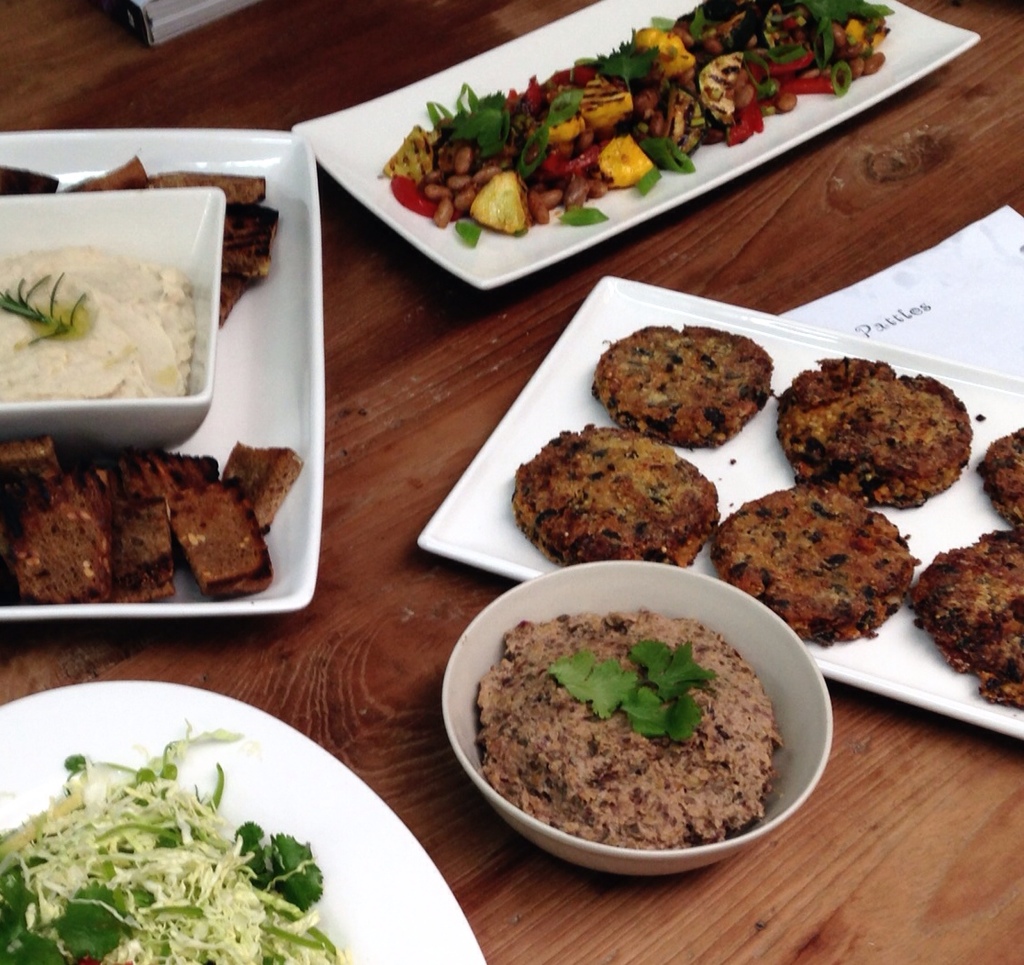
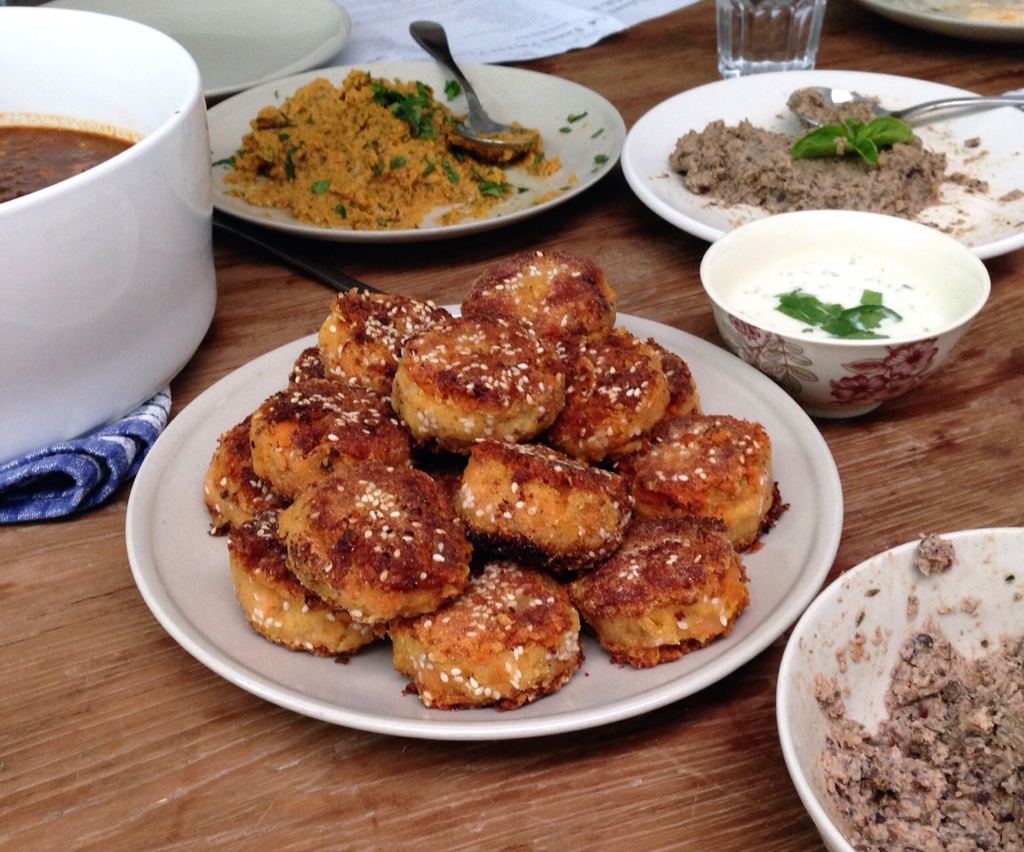
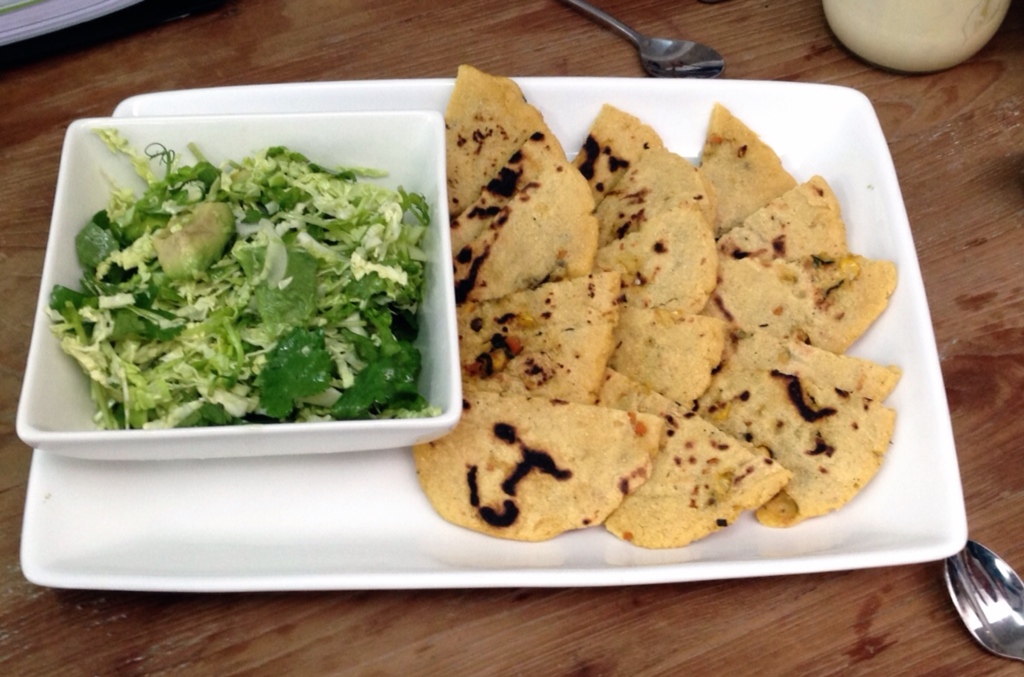
Leave a Reply